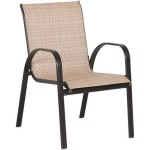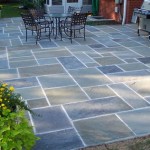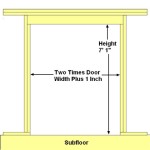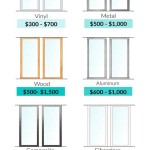Concrete Patio Step Ideas: Integrating Function and Design
Concrete patios provide durable and versatile outdoor living spaces. Often, these patios require steps to transition between different elevations, such as from a door leading from the house or to a lower garden area. Thoughtful consideration of concrete patio step designs can significantly enhance both the functionality and aesthetic appeal of the outdoor space. This article explores various ideas for concrete patio steps, focusing on design considerations, material options, and construction techniques.
Understanding Key Design Considerations
Before embarking on a concrete patio step project, it is crucial to consider practical and aesthetic factors. The design should seamlessly blend with the existing architecture of the house and the overall landscape design. Adherence to building codes and safety regulations is paramount. Considerations should include the number of steps required, their rise and run dimensions, the materials used, and any necessary handrails or lighting.
Rise and Run Calculations: The rise, the vertical height of each step, and the run, the horizontal depth of each step, are critical for comfortable and safe use. A standard rise is typically between 6 and 8 inches, while the run usually falls between 10 and 12 inches. Consistency in these measurements across all steps is essential to prevent tripping hazards. Local building codes often dictate specific requirements for rise and run dimensions, which must be followed.
Step Width: The width of the steps should be proportionate to the size of the patio and the expected foot traffic. Narrow steps can feel cramped and unsafe, while overly wide steps might appear disproportionate. A minimum step width of 36 inches is generally recommended for comfortable use, but wider steps may be preferable if the patio is large or if the steps lead to a high-traffic area.
Drainage: Proper drainage is vital to prevent water accumulation on the steps, which can lead to slipping hazards and damage to the concrete over time. The steps should be slightly sloped to allow water to run off easily. Incorporating drainage channels or grates at the base of the steps can further enhance water management.
Accessibility: If accessibility is a concern, consider designing steps with a gentler slope and wider tread depth to accommodate individuals with mobility limitations. Ramps may be a more suitable alternative for some situations. Compliance with ADA (Americans with Disabilities Act) guidelines may be necessary in certain circumstances, particularly for commercial properties or public spaces.
Exploring Material Options and Finishes
While concrete is the primary material, various options exist to enhance its appearance and durability. Different types of concrete mixes, aggregates, and finishing techniques can dramatically alter the final look of the steps. Incorporating other materials, such as stone, brick, or wood, can create visually appealing and textured steps.
Exposed Aggregate Concrete: This technique involves removing the top layer of cement paste to reveal the decorative aggregates embedded within the concrete mix. This creates a textured, slip-resistant surface that can be customized with different types of aggregates, such as pebbles, stones, or recycled glass. Exposed aggregate concrete offers a durable and aesthetically pleasing option for patio steps.
Stamped Concrete: Stamped concrete involves pressing molds into the freshly poured concrete to create patterns and textures that mimic natural stone, brick, or wood. This technique allows for a wide range of design options and can be used to create visually stunning and realistic-looking steps. Stamped concrete is a cost-effective alternative to using actual stone or brick while still providing a durable and long-lasting surface.
Colored Concrete: Integral color pigments can be added to the concrete mix to create a wide range of hues. This allows for seamless integration of the steps with the surrounding landscape or architectural elements. Colored concrete can be used to create subtle, natural tones or bold, vibrant colors, depending on the desired aesthetic. Surface stains can also be applied to existing concrete to achieve a similar effect.
Concrete Overlays: Concrete overlays are thin layers of cementitious material that can be applied over existing concrete surfaces to resurface them. This is a cost-effective way to revamp old or damaged concrete steps without having to completely replace them. Overlays can be textured, stamped, or colored to achieve a variety of looks.
Combining Concrete with Other Materials: Concrete can be paired with other materials to create unique and visually appealing steps. For example, concrete treads can be supported by brick or stone risers, or wooden inserts can be incorporated into the concrete surface to add warmth and texture. These combinations can create a more sophisticated and visually interesting design.
Sealing and Protection: Applying a concrete sealer is crucial to protect the steps from water damage, staining, and wear and tear. Sealers penetrate the concrete surface and create a protective barrier that repels water and other liquids. Different types of sealers are available, including acrylic sealers, epoxy sealers, and polyurethane sealers, each with its own advantages and disadvantages. Regular resealing is necessary to maintain the protective properties of the sealer.
Implementing Various Step Designs and Styles
The design of concrete patio steps can vary from simple and functional to elaborate and decorative. The chosen design should complement the overall style of the patio and the surrounding landscape. Several popular step designs can be adapted to fit specific needs and aesthetic preferences.
Floating Steps: Floating steps create a modern and minimalist look by appearing to be suspended in the air. This effect is achieved by using hidden supports or cantilevering the steps from a wall or structure. Floating steps often feature clean lines and simple geometries, making them a popular choice for contemporary designs.
Tiered Steps: Tiered steps involve creating multiple levels or platforms interconnected by steps. This design can be used to create a gradual transition between different elevations and can be particularly effective in sloping landscapes. Tiered steps can be designed with varying widths and depths to create a dynamic and visually interesting effect.
Curved Steps: Curved steps add an element of elegance and sophistication to a patio design. They can be used to soften the lines of a rectangular patio or to create a more natural and flowing transition between different areas. Constructing curved steps requires precise planning and execution but can result in a stunning visual impact.
Cantilevered Steps: Similar to floating steps, cantilevered steps extend horizontally beyond their support structure, creating a bold and dramatic effect. These steps require careful engineering and construction to ensure structural stability. Cantilevered steps are often used in modern designs to create a sense of lightness and airiness.
Inset Steps: Inset steps are incorporated directly into the surrounding landscape, such as a lawn or garden bed. This design creates a seamless transition between the patio and the surrounding greenery. Inset steps can be made from precast concrete blocks or poured-in-place concrete and are often used in informal or naturalistic landscape designs.
Adding Handrails and Lighting: Handrails are essential for safety, particularly on steps with multiple rises or in areas with limited visibility. Handrails can be made from various materials, including metal, wood, or composite materials, and should be securely anchored to the steps or surrounding structure. Lighting is also crucial for safety and can enhance the aesthetic appeal of the steps. Low-voltage landscape lighting can be installed along the steps to illuminate the path and create a warm and inviting atmosphere.
Incorporating Plantings: Integrating plantings around the steps can soften the harshness of the concrete and create a more natural and inviting atmosphere. Low-growing groundcovers, ornamental grasses, or flowering plants can be planted alongside the steps to add color and texture. Container plants can also be placed on the steps to add visual interest and seasonal color.
Maintaining and Repairing Concrete Steps: Regular maintenance is essential to keep concrete steps in good condition. This includes cleaning the steps regularly to remove dirt, debris, and stains, and resealing them periodically to protect them from water damage. Small cracks and chips can be repaired with concrete patching compounds. More significant damage may require professional repair or replacement.
Careful planning, appropriate material selection, and skilled construction are key to creating concrete patio steps that are both functional and aesthetically pleasing. By considering these factors, homeowners can enhance their outdoor living spaces and increase the value of their properties.

31 Patio Steps Ideas Stairs

Concrete Steps Outdoor Stair Design Height Network

31 Patio Steps Ideas Stairs

Patio Steps Stairs Concrete

Backyard Patio Steps 10 Ideas To Build For Your Home Arinsolangeathome

Portfolio Of Twin Falls Concrete Services

Outdoor Concrete Construction For Your Home This Summer

Nice Backyard Concrete Patio With Steps Deckbuildingconcretepatios Stairs

Flagstone Landscaping 9 Best Ideas For Your Project Stone Center

Concrete Steps Design Ideas








